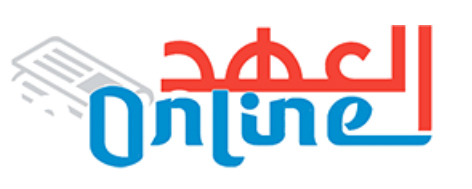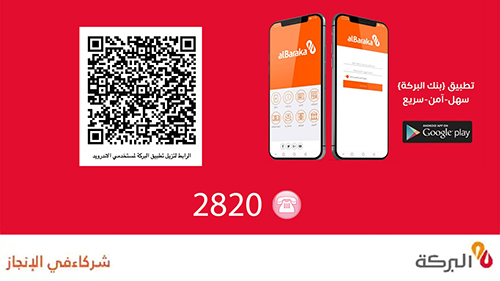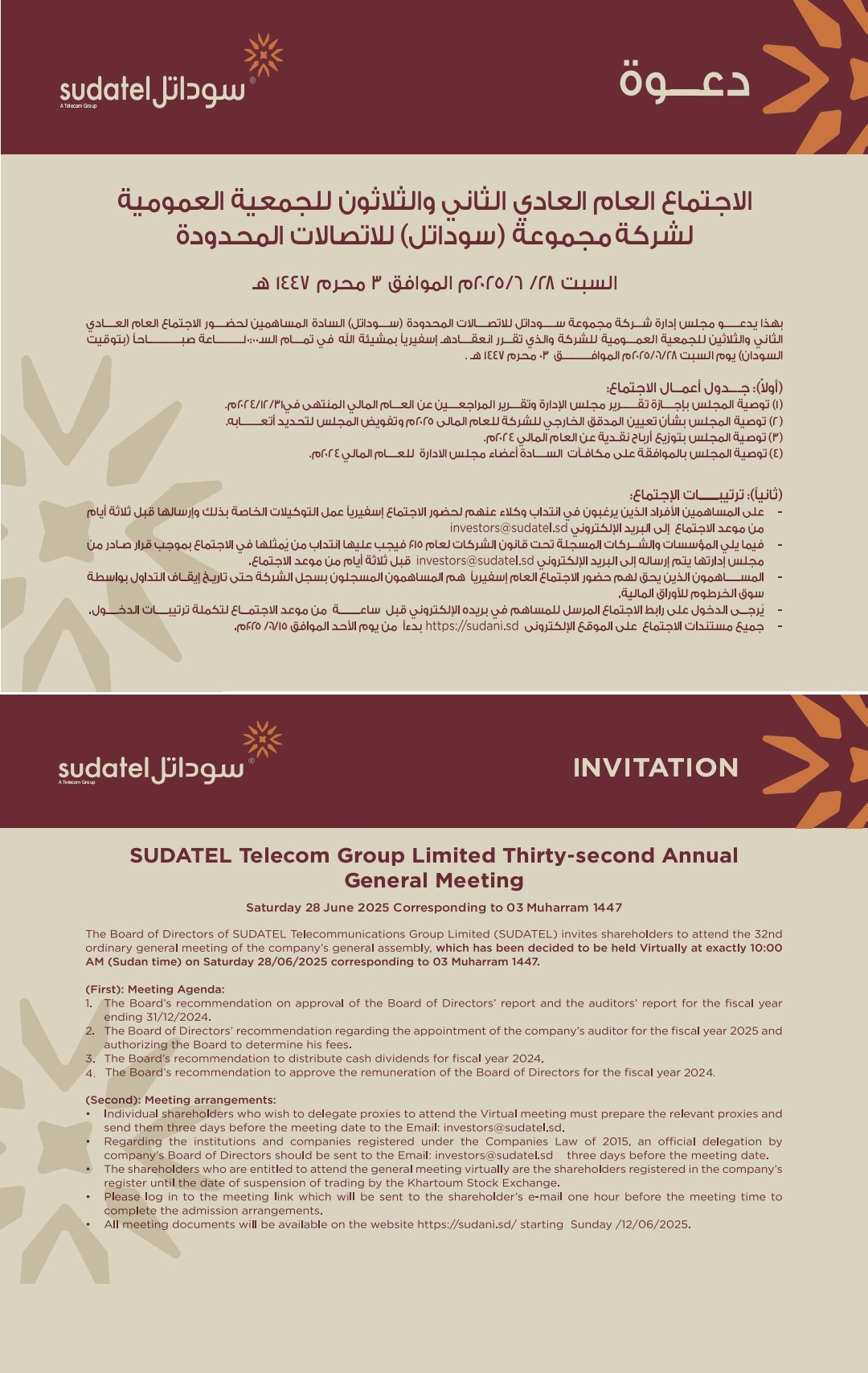د. محمد يوسف قباني يكتب:الفتن والقلاقل بصيغة الميديا: قراءة تحليلية في المحتوى الإعلامي الموجّه خلال الحروب والنزاعات والأزمات والنزوح وتداعياتها على المجتمع السوداني (مقاربة علمية).. *Sedition and Unrest in the Media: An analytical reading of the media content directed during wars, conflicts, crises, and displacement and their repercussions on Sudanese Community (A Scientific Approach)..* Dr. Mohamed Elgabbani..

د. محمد يوسف قباني يكتب:الفتن والقلاقل بصيغة الميديا: قراءة تحليلية في المحتوى الإعلامي الموجّه خلال الحروب والنزاعات والأزمات والنزوح وتداعياتها على المجتمع السوداني (مقاربة علمية)..
*Sedition and Unrest in the Media: An analytical reading of the media content directed during wars, conflicts, crises, and displacement and their repercussions on Sudanese Community (A Scientific Approach)..*
Dr. Mohamed Elgabbani..
لطالما لعب الإعلام دوراً محورياً في تشكيل الرأي العام وتوجيه الإدراك الجمعي في أوقات السلم والحرب، غير أن دوره في سياقات النزاع، لا سيما في الدول الهشة سياسياً واجتماعياً، يأخذ طابعاً بالغ الخطورة، إذ يتحول من كيفية أو آلية لنقل المعلومة إلى أداة لتوجيه وصناعة الفتن، وبث الكراهية، وتأجيج الصراعات، وتفكيك النسيج الاجتماعي. إن الإعلام في أزمنة الحرب ليس أداة
محايدة، بل يمكن أن يصبح طرفاً فاعلاً في النزاع، سواءً بوعي أو دون وعي. ولأن السودان يمر بمرحلة حرجة في تاريخه، فإن الحاجة ماسة إلى إعادة النظر في البيئة الإعلامية الراهنة، وضبط أدواتها، وتوجيهها من منابر لإشعال الفتن إلى جسور للحوار والتعايش وبناء السلم الاجتماعي.
إن تحليل الفتنة بصيغة الميديا ليس مجرد جهد بحثي علمي أو أكاديمي، بل هو مدخل لفهم خطورة المرحلة، واستشراف آفاق الإصلاح الإعلامي الذي لا يقل أهمية عن الإصلاح السياسي والاقتصادي في السودان. في ظل الحروب المعقدة والممتدة التي يعاني منها السودان، خصوصاً منذ اندلاع الصراع بين مكونات المؤسسة
العسكرية في أبريل 2023، برزت آليات الإعلام التقليدي والرقمي كمحاور مركزية في تشكيل البيئة الاتصالية للصراع. هذه المقالة تسعى لتحليل المحتوى الإعلامي الموجّه خلال الأزمات، خاصة في حالات الحرب والنزوح، وتداعيات ذلك على البنية النفسية والاجتماعية والسياسية للمجتمع السوداني الأصيل والممزق.
The media has always played a pivotal role in shaping public opinion and guiding collective perception in times of peace and war. However, its role in conflict contexts, particularly in politically and socially fragile countries like Sudan, takes on a particularly dangerous character. It transforms from a method or mechanism for conveying information into a tool for directing and
creating discord, spreading hatred, fueling conflict, and dismantling the social fabric. In times of war, the media is not a neutral tool; rather, it can become an active party to the conflict, whether consciously or unconsciously. Because Sudan is passing through a critical phase in its history, there is an urgent need to reexamine the current media environment, regulate its tools, and redirect it from platforms for igniting
discord to bridges of dialogue, coexistence, and building social peace. Analyzing discord through the media is not merely a scientific or academic research effort; it is an entry point for understanding the severity of the situation and exploring the prospects for media reform, which is no less important than political and economic reform in
Sudan. Amid the complex and protracted wars that Sudan has been experiencing, particularly since the outbreak of conflict between components of the military bodies in April 2023, traditional and digital media have emerged as central axes (pivot) in shaping the communication environment of the conflict. This article seeks to analyze media content directed during crises, particularly in cases of war and
displacement, and the repercussions this has on the psychological, social, and political structure of the authentic yet torn Sudanese community.
إن كان هناك ثم ما يُعرف بالإطار النظري والمفاهيمي في هذا الصياغ، فإن مفهوم “الفتنة بصيغة الميديا” يقصد بـها تلك الحالة التي تستخدم فيها أدوات الإعلام (المقروء، المرئي، الرقمي) في إذكاء التوترات، تأجيج النعرات القبلية والدينية، وتحويل الصراع من صراع سياسي إلى
صراع مجتمعي. وهي صيغة تستند إلى إخراج إعلامي احترافي أحياناً، وشعبوي أحياناً أخرى، يُوجد واقعاً زائفاً يتغذى على التهويل، والتضليل، والشحن العاطفي.
فضمن الإعلام والنزاع هناك ما يُعرف بنظريات التأطير والبروباغندا، حيث يرتكز تحليلنا على نظريتين أساسيتين: نظرية التأطير الإعلامي (Framing Theory) حيث تُبنى الرسائل الإعلامية ضمن أطر معينة تعيد توجيه انتباه الجمهور نحو تفسيرات محددة للصراع.
والثانية نظرية البروباغندا (Propaganda Theory) والتي تُستخدم لفهم كيفية توظيف الإعلام كآلية للهيمنة والتأثير عبر نشر رسائل موجّهة لخدمة طرف دون آخر.
أما في السياق السوداني فملامح الإعلام في ظل الأزمات سنتناولها عبر نقطتين الأولي عن الإعلام السوداني الرسمي والبديل والثانية عن تحديات البيئة الإعلامية
السودانية. وفي السودان، ينقسم المشهد الإعلامي إلى: الإعلام الرسمي الذي يخضع غالباً لتوجيهات السلطة. أما الإعلام البديل (الرقمي والمجتمعي) فهو يتمثل في منصات تنشط في فيسبوك، تويتر، تيك توك، وتطبيقات المراسلة مثل واتساب، والتي أصبحت مسرحاً ومنبتاً خصباً لتداول الإشاعات والخطابات الحادة.
If there is a theoretical and conceptual framework in this formulation, the concept of “media-mediated sedition” refers to the situation in which media tools (print, visual, digital) are used to incite tensions, fuel tribal and religious sedition, and transform the conflict from a political conflict into a
societal one. This formulation is based on media production that is sometimes professional, and sometimes populist, and creates a false reality fueled by exaggeration, misinformation, and emotional incitement.
Within the context of media and conflict, there are what are known as framing and propaganda theories. Our analysis is based on two fundamental theories: Framing
Theory, media messages are constructed within specific frameworks that redirect the public’s attention toward specific interpretations of the conflict.
The second is Propaganda Theory, it is used to understand how the media is used as a mechanism for domination and influence by disseminating messages directed at one party over another. In the Sudanese context, the writer will address the features of media
during crises in two points: the first is about the official and alternative Sudanese media, and the second is about the challenges facing the Sudanese media environment. In Sudan, the media landscape is divided into: the official media, which is often subject to the directives of the authorities. Alternative media (digital and community) is
represented by platforms active on Facebook, Twitter, TikTok, and messaging apps such as WhatsApp, which have become a fertile ground for the spread of rumors and harsh rhetoric.
وتشهد البيئة الإعلامية السودانية تحديات كبيرة، من أبرز التحديات:
1. غياب التشريعات المنظمة للعمل الإعلامي في أوقات النزاعات.
2. غلبة التموقع الجهوي والقبلي على الأداء الإعلامي.
3. ضعف التكوين المهني والأخلاقي للعديد من الممارسين الإعلاميين.
4. ضعف البنية التحتية التقنية للإعلام الوطني مقارنة بالمنصات الخارجية.
وعند البدء في تناول تحليل المحتوى الإعلامي الموجّه خلال الحرب (2023–2025) نجد أن هناك خصائص العامة لهذا المحتوى، ومن ضمنها:
1. التركيز أولاً على الشحن العاطفي، فكثير من الرسائل الإعلامية تعتمد على صور الدمار والضحايا ودموع النازحين دون معالجة نقدية.
2. الاعتماد على الاستقطاب الجهوي وقد يظهر جلياً في التغطية الإعلامية، حيث يتم تصوير جماعة بأنها الضحية وأخرى بأنها الجلاد.
3. استخدام الإغراق في نظرية المؤامرة، يتم ذلك عبر اتهام أطراف داخلية أو دولية.
4. إقصاء الأصوات المعتدلة، بحيث يتم تجاهل مبادرات السلام أو التهدئة، لصالح سرديات الحرب والانتصار.
ويتم ذلك عن أدوات الفتنة الإعلامية، وهي كثيرة، ونسردها باختصار:
1. إعداد المقاطع المفبركة، والتي غالباً ما تُقص وتُخرج من سياقها.
2. استخدام الصور الصادمة بلا تحقّق بحيث يتم استخدام صور من صراعات أخرى وبيئات قريبة وليس لها صلة الصياغ السوداني.
3. عرض الوسوم التحريضية (Hashtags) مثل “العدو في الداخل”، “لا تفاوض”، “سحق الخونة” وعبارات أخرى كثيرة تجول في كل الميديا هذه الأيام.
4. إطلاق بث مباشر مزيف ليستخدم لإشعال الهلع في أوقات حرجة.
The Sudanese media environment faces significant challenges, the most prominent of which are:
1. The absence of legislation regulating media work during times of conflict.
2. The prevalence of regional and tribal positioning in media performance.
3. The poor professional and ethical training of many media practitioners.
4. The weak technical infrastructure of the national media compared to foreign platforms.
When beginning to analyze the media content directed during the war (2023–2025), the writer finds and concludes some general characteristics of this content, including:
1. The primary focus is on emotional content, as many media messages rely on images of destruction, victims, and the tears of displaced people without critical treatment.
2. The reliance on regional polarization, which may be clearly evident in media coverage, where one group is portrayed as the victim and another as the executioner.
3. The use of conspiracy theories, which is carried out by accusing internal or international parties.
4. The exclusion of moderate voices, whereby peace or de-escalation initiatives are ignored in favor of narratives of war and victory.
This is done through numerous media tools of sedition, which we briefly list:
1. Preparing fabricated clips, which are often cut and taken out of context.
2. Using shocking images without verification, such as images from other conflicts and similar environments that are unrelated to the Sudanese context.
3. Displaying provocative hashtags such as “The enemy is within,” “No negotiations,” “Crush the traitors,” and many other phrases circulating throughout the media these days.
4. Launching fake live broadcasts to ignite panic during critical times.
وهنا سنتناول آثار هذا المحتوى على المجتمع السوداني من عدة جوانب، نفسية، اجتماعية، سياسية وأمنية، ولا سيما عرض بعض مداخل علمية للتصدي للفتن الإعلامية.
ونبدأ بالأثر النفسي، وتظهر أثاره جليةً في ظهور القلق الجماعي كنتيجة تضخيم الأخبار السلبية ويأخد أشكالاً متعددة مثل اضطرابات ما بعد الصدمة (PTSD) لدى الأطفال والنساء والشعور المتنامٍ بالتهديد والانقسام حتى بين الجيران في نفس الحي.
ونثني بالأثر الاجتماعي، وهو الأخطر فتكاً لأنه جماعي ويؤدي للأسف إلى تقويض الثقة المجتمعية وتدميرها وخلخلة المجتمعات نتيجة الشك في الآخر المختلف إثنياً أو جهوياً. ونضيف إلى ذلك العمل لتعميق الشرخ بين النازحين والمجتمعات المستضيفة، وإعادة تشكيل الهويات بناء على خطاب الكراهية.
أما الأثر الثالث، فهو أثر سياسي وأمني يهدف إلى إطالة أمد الصراع بسبب صعوبة بناء الثقة وتحديات أخرى كثيرة مثل تعطيل عمليات السلام والمصالحات المحلية، تغذية مشاريع العنف المضاد والانفصال المجتمعي.
ونختم بتناول مداخل علمية للتصدي للفتن الإعلامية والتي لزم الانتباه لها عبر تعزيز التربية الإعلامية
(Media Literacy) من خلال برامج توعية مجتمعية في الجامعات، والمدارس، والمراكز الثقافية والرياضية، والمخيمات، لتعزيز التفكير النقدي تجاه الرسائل الإعلامية. وننصح بعقد ميثاق إعلامي للسلام، لتأسيس ميثاق سوداني لإعلام النزاعات يلتزم به الصحفيون ومنصات التواصل في أوقات الحروب. التدريب على
آليات رصد وتحليل المحتوى الضار عبر إنشاء وحدات تحليل إعلامي مستقلة تتصل بالمجتمع المدني لمراقبة وتقييم خطاب الكراهية. والعمل على استثمار الإعلام المجتمعي في السلام وتمكين المبادرات الإعلامية المحلية من أدوات وموارد لإنتاج محتوى توعوي إنساني، يعزز القيم المشتركة والتماسك.
Here, the writer will address the effects of this content on Sudanese community from several perspectives: psychological, social, political, and security-related. It particularly presents some scientific approaches to countering media sedition.
Beginning with the psychological impact, which is clearly evident in the emergence of collective anxiety resulting from the intensification of negative news. This impact takes many forms, such as post-traumatic stress disorder (PTSD) among children and women, vulnerable
communities, and a growing sense of threat and division, even among neighbors in the same neighborhood.
The writer also highlights the social impact, which is the most dangerous because it is collective and unfortunately leads to the undermining and destruction of societal
trust and the destabilization of communities due to suspicion of the other, whether ethnically or regionally. The writer would emphasize and add the point that related to the efforts to deepen the crack/ disagreement between displaced persons and host communities and reshape identities based on hate speech.
The third impact is political and security-related, aiming to prolong the conflict due to the difficulty of building trust and many other challenges, such as disrupting peace processes and local reconciliations, fueling counter-violence projects, and societal separation. The writer concludes by addressing scientific approaches to countering media sedition, which requires attention by promoting media literacy
through community awareness programs in universities, schools, cultural and sports centers, and camps, to foster critical thinking about media messages. The writer recommends convening a media charter for peace to establish a Sudanese charter for conflict media, to which journalists and social media platforms are committed in times of war. The writer as well
recommends training on mechanisms for monitoring and analyzing harmful content by establishing independent media analysis units linked with civil community to monitor and evaluate hate speech. The writer similarly recommends investing in community media for peace and
empowering local media initiatives with tools and resources to produce humane awareness content that promotes shared values and cohesion.
وفي ضوء التحليل العلمي لمحتوى الإعلام الموجّه خلال الأزمات السودانية، تبرز ثلاث نتائج جوهرية:
1. خطورة التأثير التصاعدي escalation، إذ يظهر من التحليل الأولى أن الخطاب الإعلامي المتحيز يعمل كـ”مسرّع حفزي” للعنف، حيث تسجل الدراسات زيادة بنسبة 60% في حدة الصراعات عند وجود تغطية إعلامية تحريضية.
2. هناك ما يسمى بالبنية الشبكية، وتكشف تحليلات الشبكات الاجتماعية أن 73% من المحتوى المثير للفتن ينتشر عبر ثلاث قنوات رئيسية فقط، مما يؤكد وجود بنية مركزية في نشر الخطاب الضار.
3. الانتباه للأثر التراكمي لأن التعرض المتكرر للمحتوى التحريضي (وفق نموذج التعرض التراكمي) تغييرات دائمة في التصورات الاجتماعية، حيث تسجل القياسات انخفاضاً بنسبة 40% في مؤشرات الثقة المجتمعية بعد 6 أشهر من الحملات الإعلامية المكثفة.
وتقتضي الضرورة العلمية تطوير “نموذج تنبؤي متكامل” يجمع بين تحليل المشاعر الآلي ودراسات الشبكات الاجتماعية ورصد المؤشرات الاقتصادية-الاجتماعية، لبناء نظام إنذار مبكر ضد التصعيد الإعلامي الخطير، مع ضرورة إخضاع هذه الأدوات لاختبارات ميدانية في البيئة السودانية المحددة.
In light of the scientific analysis of the media content directed during the Sudanese crises, three fundamental findings emerge:
1. The danger of escalation. Initial analysis shows that biased media discourse acts as a “catalytic accelerator” of violence, with studies recording a 60% increase in the intensity of conflicts when provocative media coverage is present.
2. There is something called a network structure. Social network analyses reveal that 73% of provocative content is disseminated through just three main channels, confirming the presence of a central structure in the dissemination of harmful discourse.
3. Pay attention to the cumulative effect, as repeated exposure to provocative content (according to the cumulative exposure model) leads to permanent changes in social perceptions. Measures record a 40% decrease in community trust indicators after six months of intensive media campaigns.
Scientific necessity dictates the development of an “integrated predictive model” that combines automated sentiment analysis, social network studies, and socioeconomic indicator monitoring to build an early warning system against dangerous media escalation. These tools must be subjected to field testing in the specific Sudanese context.









